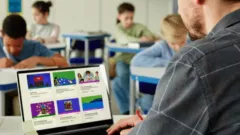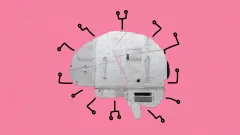Take a look inside 5 images
Luna's Wandering Stars
Pros: Lots of levels, engaging gameplay, and a hilarious com channel keep students learning.
Cons: There's a high chance of frustration on more difficult levels.
Bottom Line: Students will learn about how the gravity of large masses works. Period.
Teachers can use Luna's Wandering Stars as an introduction to various physics or astronomy lessons, or include it as an enrichment exercise for students who have finished the rest of their work. It can be assigned as homework, or it can be a great jumping-off point for lessons on the history of the space program or for teaching how satellites (both natural and man-made) function in outer space.
Students take on the role of Luna, a moon who ends up nearby each of the nine planets (including Pluto). Kids clear each level by orbiting the planet and hitting enough asteroids to gain enough mass, moving around by using physics principles like momentum, gravity, rocket boosts, and more. Students are also supposed to collide with as many gold asteroids as possible, but it's often technically possible to clear the level without that being the primary goal. Each planet has many levels, along with special challenges and tools to use and additional obstacles to overcome.
This visually beautiful game will pull in students right away. While deeply engaged, students will learn about angular momentum, Newton's laws, and how mass affects gravity. Since kids can still play this game without having studied physics, they can learn on the fly how moons and asteroids move when close to a massive object. They'll get practice applying Newton's Third Law while trying to maneuver a moon around a planet or through asteroid fields. The Mercury levels are straightforward and relatively easy, so beginning students can learn the basics of the game without worrying about complicated mechanics. Trial-and-error is your friend while you try to gain enough mass to clear levels. Each planet level gives a deeper challenge that teaches kids something new.












